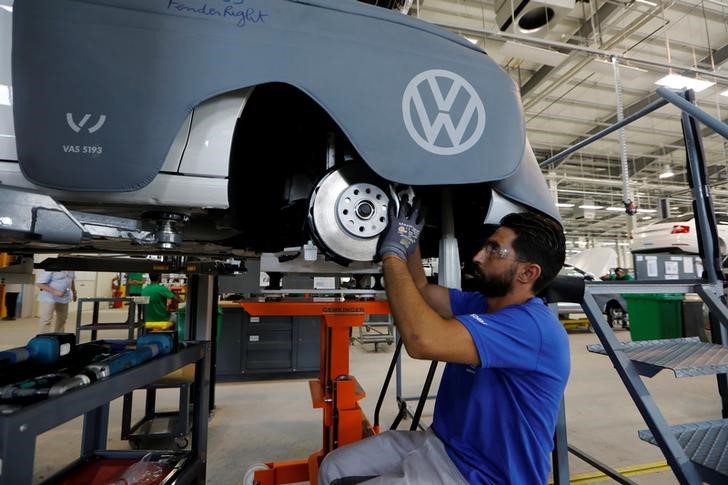By Geoffrey Smith
Investing.com -- Europe's manufacturing heart had a brighter month in October than seemed likely, but a stronger-than-expected rebound in incoming orders was flattered by a handful of large orders.
Incoming orders to German factories rose 0.8% from September, rather than the 0.1% forecast, Federal Statistics Office Destatis said on Tuesday. It also revised up September's figures to show a drop of only 2.9%, rather than the 4.0% originally reported. As a result, orders were down 3.2% from a year earlier.
The figures still leave orders on course for a decline in quarter-on-quarter terms, albeit a less steep one than feared.
Destatis said that large orders - which tend to be highly volatile from one month to the next - were responsible for the rise in October. Without them, overall orders would have declined again, by 1.2%.
Domestic orders fell by 1.9%, while export orders rose by 2.5%, adding to evidence that the relaxation of global supply chain bottlenecks has improved customers' willingness to commit to major purchases.
In contrast to previous months, which showed a relatively even pattern of weakness, October's figures showed a sharp divergence in sectoral performance: orders for capital goods and intermediate goods rose 3.2% and 1.4%, respectively, but orders for consumer goods fell 6.3%, a reflection of the growing pressure on household incomes across key markets at home and abroad.
"The modest increase in German orders in October doesn't make up for the sharp declines in both of the previous months," said Commerzbank chief economist Joerg Kraemer. "The trend is still downward and supports forecasts of a mild recession."
Business surveys in November suggested that manufacturing activity was falling both in Germany and the Eurozone as a whole in November. Standard & Poor's manufacturing PMI for Germany - whose industrial base is about as large as that of France, Italy, and Spain combined - stood at 46.2 last month, well below the 50 level that typically separates growth from contraction.
